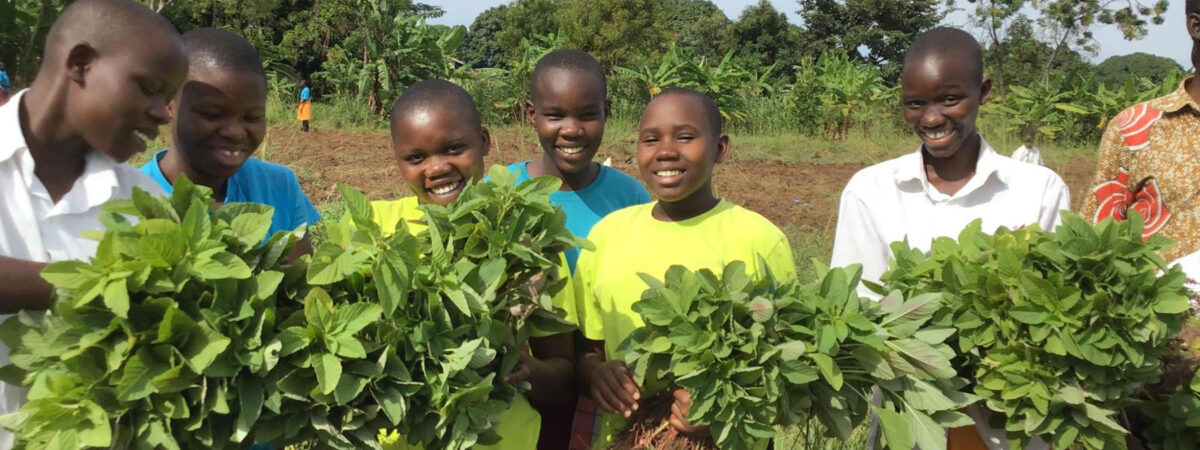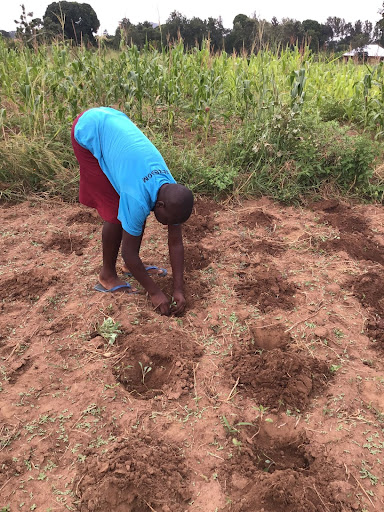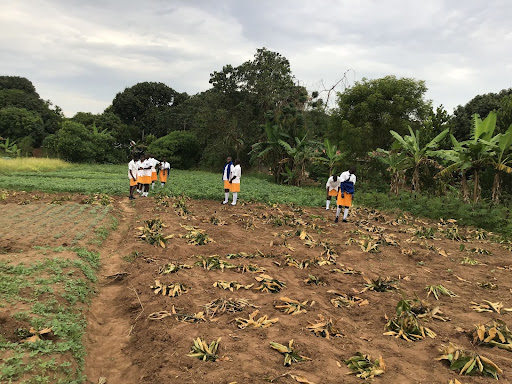
With limited access to advanced gardening equipment, our students embraced the DIY culture of gardening to create gardens for planting various vegetables like kale, eggplants, onions, peas, and amaranths, along with various fruits , like paw paw, passion fruit, mangoes, jackfruit, and oranges.

Students transplanting kale in the garden.
Students visit the gardens everyday and have seen their own diets improving as they start to harvest vegetables from it.

Students checking on crops in the garden.
“I want to eat more food whenever they serve food with greens.” – Student
Our journey in creatively using technology to address the lack of vegetables in school diets and prevalence of nutritional deficiencies among adolescents has taught us valuable lessons. We advise educators to expose their students to diverse ideas and experiences beyond their classroom and immediate context. By nurturing curiosity, creativity, and a sense of social responsibility, educators can empower students to make a greater impact on society. Technology becomes a powerful tool to bridge gaps, harness resources, and instill confidence in exploring innovative ideas.

Educator Nabuduwa Grace Olive Musingo (left) with students at Aisa radio station.
Last year, my students had the opportunity to present on a radio talk show on climate change and were amazed by its impact when they heard how many people were calling in to appreciate their knowledge. One student commented, “I have never ever thought that I could be a presenter at a radio station and never knew of the technology needed to transmit a radio program.” We hope to share the story of our vegetable garden on the local radio station as well so that other schools and community members can learn about hidden hunger and our experience addressing it at our school.
The story of our school’s transformation in addressing the challenge of a lack of vegetables in our diet showcases the power of creativity, determination, and strategic use of technology. As the journey continues, we are excited to witness the continued growth and positive impact of our vegetable gardens on the overall well-being of our school community. Through collective effort, we are nurturing healthier, more vibrant futures for our students and empowering them to become catalysts for change.